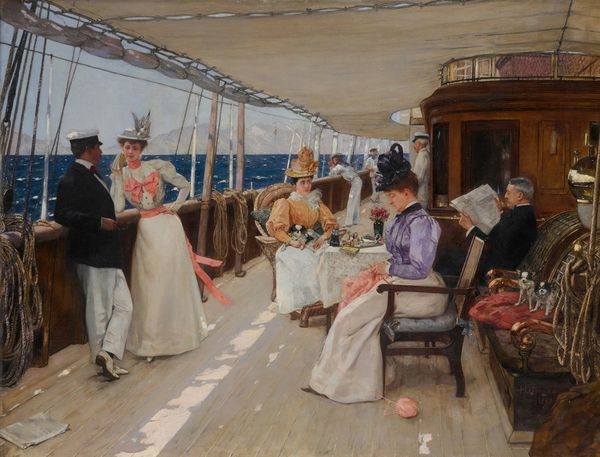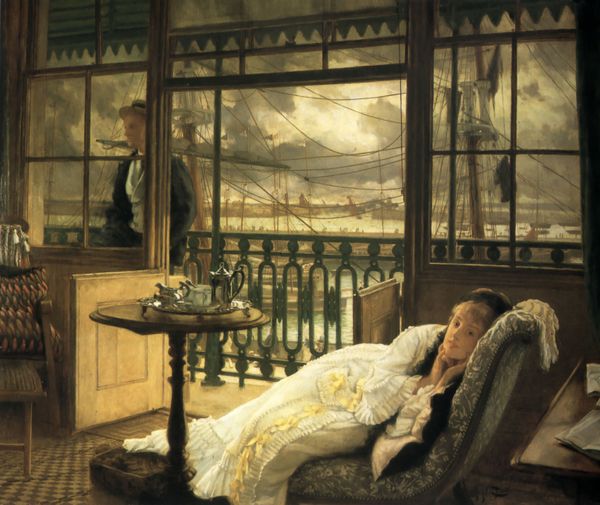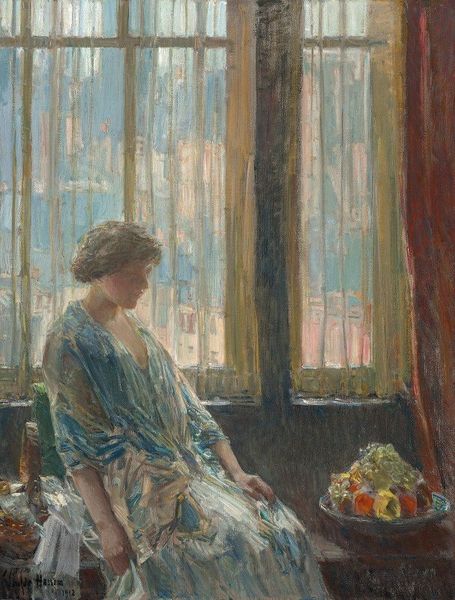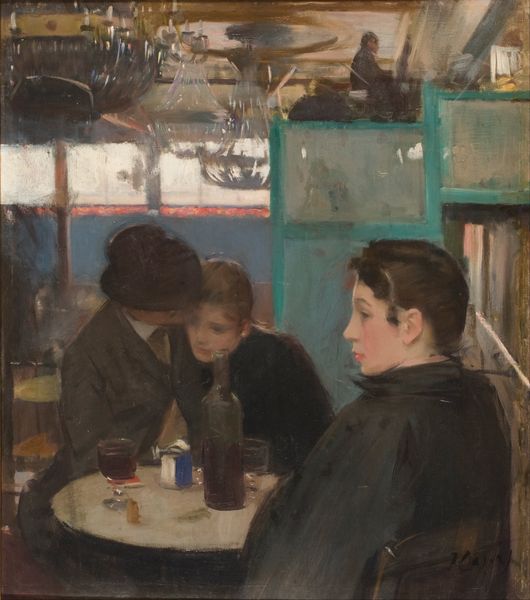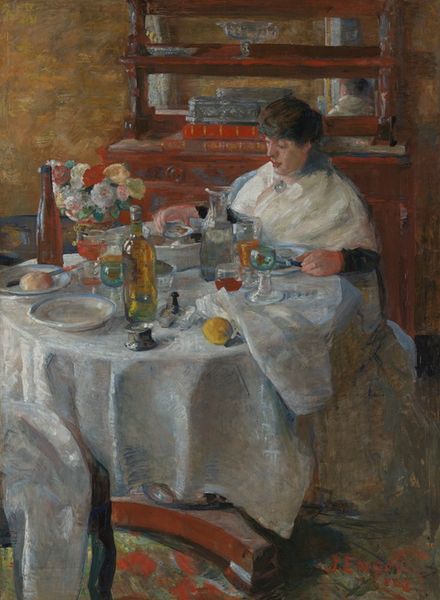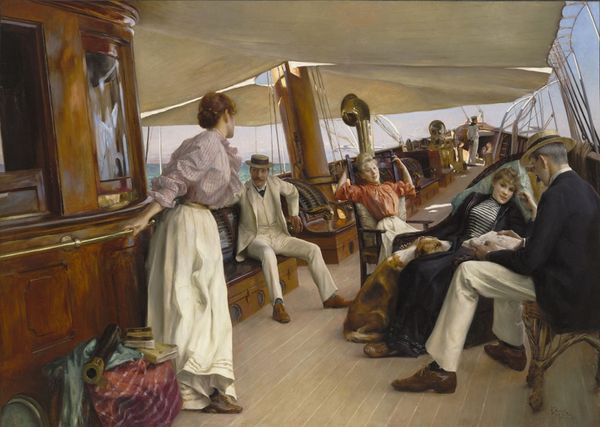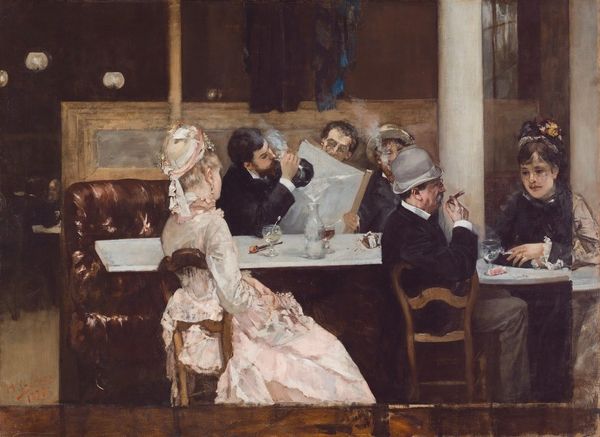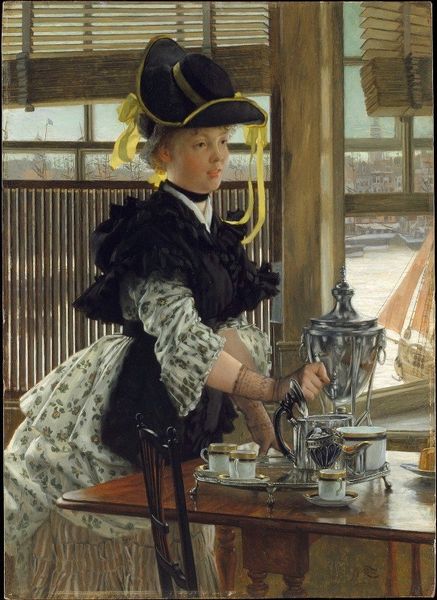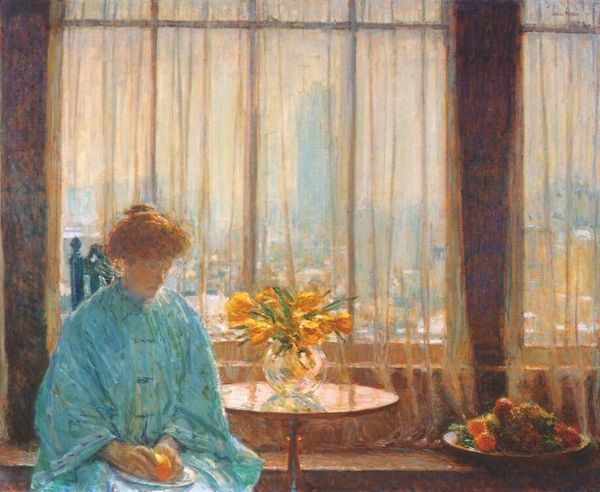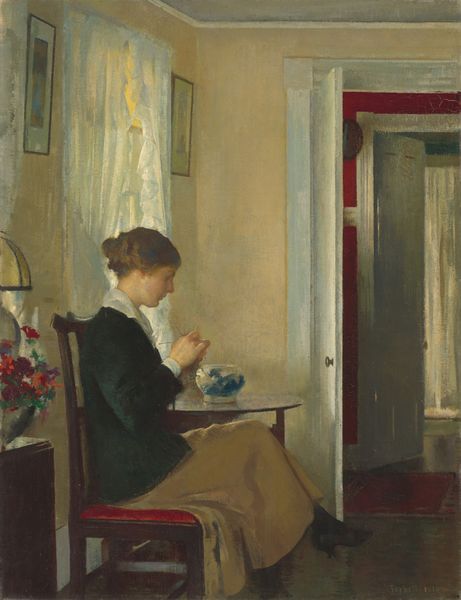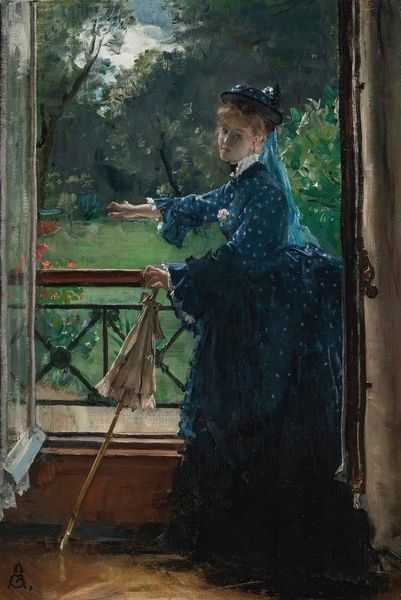
painting, oil-paint
#
portrait
#
figurative
#
painting
#
impressionism
#
oil-paint
#
painted
#
figuration
#
oil painting
#
cityscape
#
genre-painting
#
mixed media
#
watercolor
Copyright: Public Domain: Artvee
Curator: Let's delve into James Tissot's captivating oil painting, "Room Overlooking the Harbour." It's a superb example of his genre scenes that blend intimate domesticity with observations of contemporary life. Editor: Oh, the melancholic mood of this piece really gets to me! All those foggy details are somewhat softened. What a unique blend! It is as though a moment were perfectly arrested within its frame! Curator: It's interesting that you picked up on that melancholy, as Tissot often captured subtle tensions and complexities within his portrayals of Victorian society. Note how he positions the figures: the woman absorbed at the table, contrasted with the man entirely obscured by the newspaper. Editor: Absolutely, one's own interpretation could give multiple angles: it's a morning routine or could it be something deeper? Like he’s intentionally hiding, erecting a wall of newsprint. Are they really connected, despite sharing the same room? The window, showing a glimpse of a wider environment, adds another story layer: What could that outside be reflecting on this small room! Curator: That's precisely the kind of layered reading Tissot invites. The harbor, with its activity, creates a fascinating tension with the stillness inside the room. You could analyze that sense of voyeurism with that level of depth: what are they looking for by showing interest in that window in contrast with what they share at home? The work then subtly explores themes of social class, gender roles, and perhaps even a commentary on communication, or the lack thereof, within marriage. Editor: Marriage, a sacred moment between the old and new is about what to find. How insightful, right? I like how those bright white elements on the newspaper or china contrast so sharply against the darker, muted palette too. A simple and lovely play on how memories might also change as we see what’s happening now. Curator: The material contrast absolutely enhances that quiet drama. This painting offers fertile ground for exploration if we contextualize this era and think of how rapidly change transformed family relationships, particularly that the position of women altered through new work. What are your final thoughts, Editor? Editor: In general, I guess for all this artful simplicity is like seeing the unseen! As the window leads beyond the painting, beyond what’s right now there. So yeah I will always remember the stillness and this sadness and depth on that painting. Curator: It's that ambiguity that really defines "Room Overlooking the Harbour"— a piece which lingers long after we've moved on.

